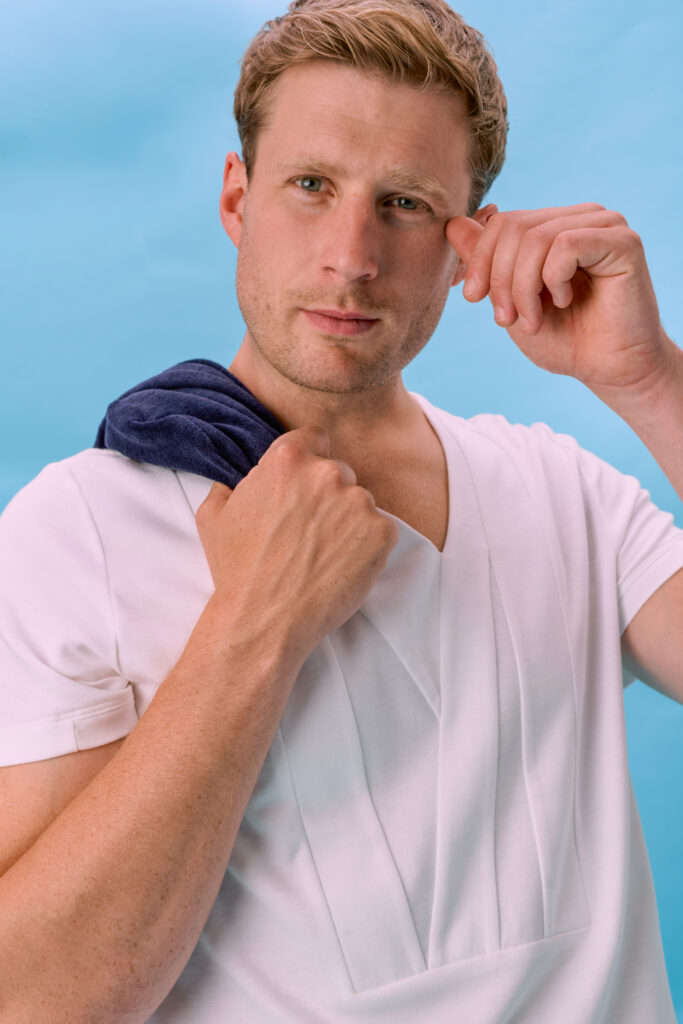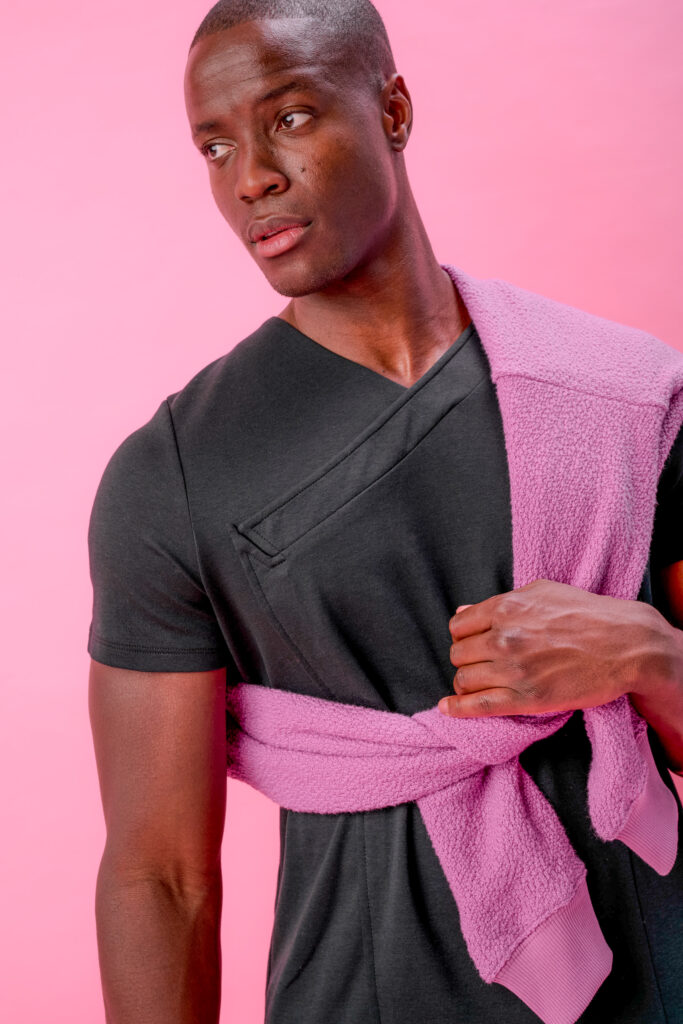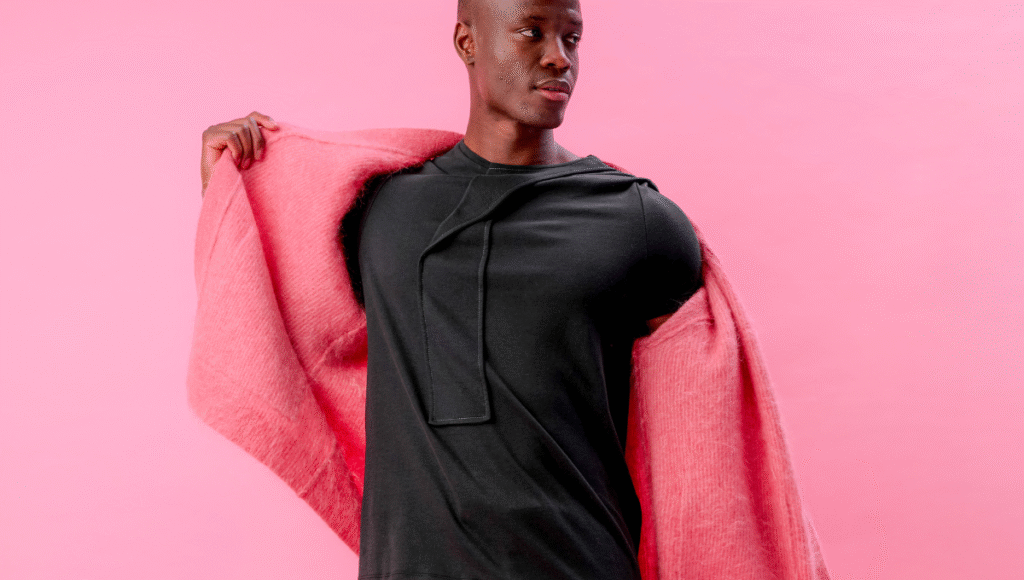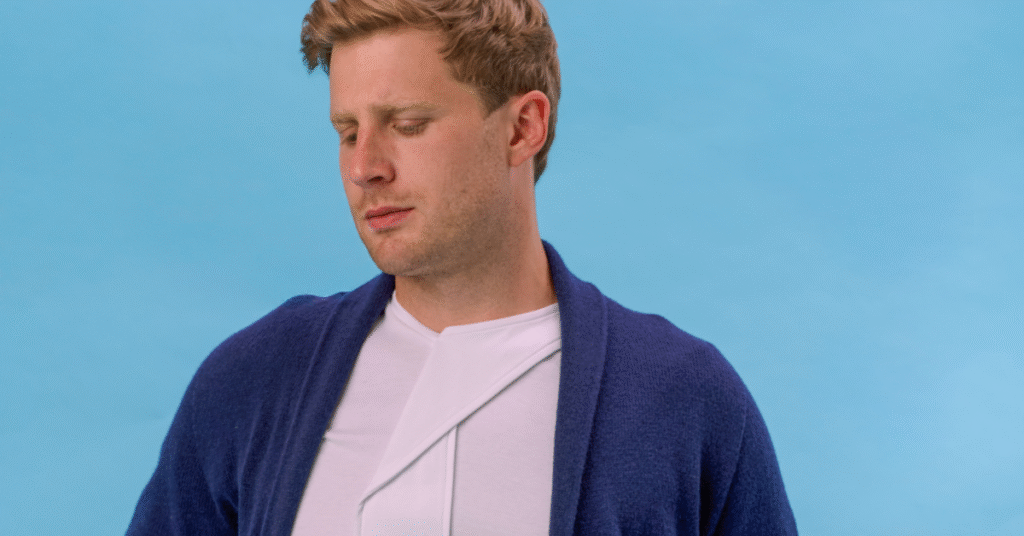When I’m shopping for quality clothing, I often see labels boasting “Pima cotton” or “Supima cotton” but what’s the real difference between Pima Cotton Vs Supima, and why should I care?
If you’ve ever stood in a shop wondering whether that extra cost for Supima is worth it, you’re not alone.
Let me break down everything you need to know about these premium cotton types, so you can make informed decisions about your next purchase especially if you’re considering Men’s Supima Cotton T Shirts for their unmatched comfort and quality.
What Exactly Is Pima Cotton?
Pima cotton represents the crème de la crème of cotton fibres.
It belongs to the extra-long staple (ELS) cotton family, specifically Gossypium barbadense, which makes up only about 7% of all cotton grown worldwide.
The name comes from the Pima Native American tribe in Arizona, where this superior cotton was first cultivated in the early 1900s.
What makes Pima cotton special?
The fibres are exceptionally long typically measuring 1.375 to 2 inches compared to regular cotton’s measly 1-inch length.
This extra length creates stronger, smoother fabric that’s:
- More durable than standard cotton
- Softer to the touch
- Better at retaining colour
- Less prone to pilling and wear
Where does Pima cotton grow?
Today, you’ll find Pima cotton flourishing in:
- Peru (the largest producer)
- United States (California, Arizona, New Mexico, Texas)
- Australia
- Israel
- China
Each region produces slightly different characteristics, but all share that signature long-staple quality.
Also Read:- Shirt vs. T-Shirt: What’s Right for You?

Understanding Supima Cotton: The Premium Brand
Here’s where things get interesting Supima cotton is actually Pima cotton.
Supima is simply a registered trademark used by cotton growers in the US, standing for “Superior Pima.”
Think of it like this: all Supima is Pima cotton, but not all Pima cotton can call itself Supima.
What makes Supima special?
Supima cotton must meet strict quality standards and is grown exclusively by licensed farms in the U.S. through a controlled supply chain.
The Supima Association (ASA) rigorously certifies every step of production, from seed to finished product.
This means when you buy Supima, you’re getting:
- Guaranteed authenticity no fake or mixed fibres
- Consistent quality every batch meets the same high standards
- Traceability you know exactly where your cotton came from
- American-grown assurance supporting US farmers and production
Supima cotton fibres are about 35% longer than regular cotton fibres, resulting in stronger, softer, and more durable fabric that retains colour and resists pilling.
The Key Differences: Pima Cotton Vs Supima
Let me lay out the main distinctions between these two premium cottons:
Origin and Geography
Pima cotton can be grown anywhere in the world with suitable climate conditions. You might find excellent Pima from Peru or decent quality from other countries.
Supima cotton is exclusively grown in the United States. Supima is always grown in the U.S., primarily in states like California, Arizona, New Mexico, and Texas. Our Supima Cotton comes from San Jose, California.
Quality Assurance
Pima cotton quality varies depending on the grower, region, and production methods. There’s no universal standard you’re relying on the manufacturer’s reputation.
Supima cotton comes with a guarantee. All Supima cotton has been vetted and certified by the ASA, and the Supima brand is a registered trademark that guarantees consumers are purchasing genuine, high-quality American Pima cotton.
Consistency
Pima cotton can be brilliant or mediocre it depends on numerous factors beyond your control as a consumer.
Supima cotton delivers consistent excellence every time because of strict oversight and standardisation.
Price Point
Pima cotton generally costs less than Supima, especially if sourced from countries with lower production costs.
Supima cotton commands a premium price, but you’re paying for guaranteed quality and ethical production standards.
Traceability
Pima cotton often lacks clear supply chain transparency. You might not know the exact farm or production methods used.
Supima cotton provides complete traceability you can trace your purchase back to the specific American farms where it was grown.
Which Should You Choose?
The answer depends on your priorities and budget.
Choose Pima cotton if:
- You want premium quality at a more accessible price point
- You’re comfortable with some variability in quality
- Country of origin isn’t a primary concern
- You’re buying from a trusted brand with good quality control
Choose Supima cotton if:
- You want absolute assurance of premium quality
- Consistency matters more than cost savings
- You prefer supporting American farmers and production
- You’re investing in items you’ll use for years (like bedding or quality clothing)
The W. Rubens Difference
At W. Rubens, we understand that choosing between premium cotton options can feel overwhelming.
That’s why we carefully curate our collection to include only the finest cotton garments that meet our exacting standards.
Our expertise lies in understanding the nuances of different cotton qualities and sourcing only from producers who share our commitment to excellence.
We believe luxury shouldn’t be complicated just beautifully crafted, supremely comfortable, and built to last.
Also Read:- What Quiet Luxury Really Looks Like (And Why It Starts With a T-Shirt)

Caring for Your Premium Cotton
Whether you choose Pima cotton or Supima cotton, proper care ensures your investment lasts for years:
Washing tips:
- Use cool or lukewarm water (30°C maximum)
- Choose gentle, colour-safe detergents
- Avoid bleach or harsh chemicals
- Turn garments inside out before washing
Drying advice:
- Air dry when possible to prevent shrinkage
- Remove while slightly damp to prevent over-drying
- Shake out items before hanging to maintain shape
Storage suggestions:
- Fold carefully or hang properly to avoid creasing
- Store in cool, dry places away from direct sunlight
- Use cedar blocks or lavender sachets for natural moth protection
Final Thoughts
Both Pima cotton and Supima cotton offer significant advantages over regular cotton fibres.
The choice between them often comes down to your personal values around quality assurance, origin, and price point.
If you value verified premium quality and ethical sourcing, Supima is the superior option, while Pima cotton can offer excellent value when sourced from reputable suppliers.
At W. Rubens, we’re here to help you navigate these choices with confidence, ensuring every piece in your wardrobe meets the highest standards of comfort, durability, and style.
Ready to experience the luxury of premium cotton?
Explore our carefully curated collection and discover why choosing quality cotton makes all the difference to your comfort and style because when it comes to Pima Cotton Vs Supima, the real winner is you.
Frequently Asked Questions
Q: Is Supima cotton worth the extra cost compared to Pima cotton?
Supima cotton offers guaranteed quality and traceability, making it worth the premium if consistency and ethical sourcing matter to you. For budget-conscious shoppers, quality Pima cotton can offer similar comfort at lower prices.
Q: Can you tell the difference between Pima and Supima cotton by touch?
High-quality Pima and Supima cotton feel very similar both are soft, smooth, and durable. The main differences lie in quality assurance and origin rather than tactile properties.
Q: How long do Pima and Supima cotton garments typically last?
With proper care, both premium cotton types can last 5-10 years or more. Their long-staple fibres resist pilling and maintain shape better than regular cotton, ensuring longevity.
Q: Are there any environmental differences between Pima and Supima cotton?
Supima cotton grown in the US often follows stricter environmental regulations. However, some international Pima cotton producers also use sustainable farming practices it depends on the specific supplier.
Q: Which cotton type is better for sensitive skin?
Both Pima and Supima cotton are excellent for sensitive skin due to their smooth, long fibres that create less friction. The choice between them won’t significantly impact skin sensitivity.







